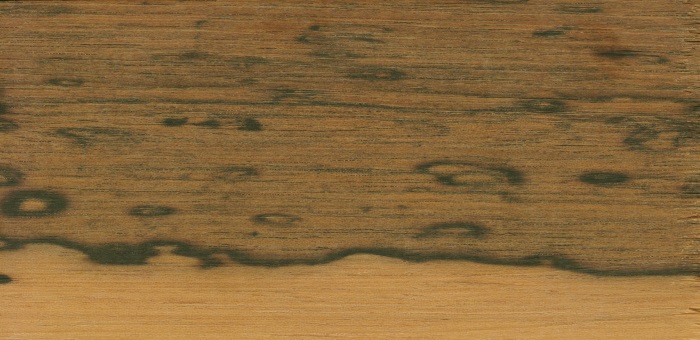Satijnhout (Satine)
| Commercial Name(s): | Bloodwood, Satine, Muirapiranga |
| Other Name(s): | Amapa Rana, Falso Pao Brasil, Pau Rainha, Satine Rubane, Doekaliballi, Palo De Oro, Legno Satino, Satinwood, Conduru, Muirapiranga, Satine Rouge, Siton Paya, Satijnhout, Ferolia. |
| Botanical Name: | Brosimum rubescens |
| Botanical Family: | Moraceae (angiosperm) |
| SBB Code: | SAT |
Profile
Satine´s Heartwood is a bright, vivid red. Color can darken to a darker brownish red over time with exposure to light. Applying a thick protective finish, and keeping the wood out of direct sunlight can help slow this color shift. Well defined sapwood is a pale yellowish color, though given the typically large trunk diameters, it’s seldom seen or included in imported lumber. Both strong and beautiful, Satine has been harvested and used for both utility and aesthetic purposes throughout its natural range. Satine has been formerly classified in the Andira genus, and is closely related to Patridgewood (and the wood also bears a close resemblance visually as well).
Typical use
Cabinetwork (high class furniture), Turned goods, Interior panelling, Stringed instruments (bow), Heavy carpentry, Tool handles (resilient woods), Sliced veneer, Stairs (inside), Flooring, Sculpture, Wood-ware
Technical Information
Trees Size: 25 – 45 m
Trunk Diameter: 0.5 – 0.70 m
Moninn Hardness: 17.6
Crushing Strength (Mpa): 90 – 122
Basic Specific gravity: 0,99 – 1.21
Density at 12% MC (g/m3 dry): 0,89
Texture: Fine
Static bending strength (Mpa): 162
Modulus of elasticy (Mpa): 28130
T/R Ratio: 1.4
Finish: Excellent
Stability: Stable


